I want to make some panel raising planes and a wooden smooth plane. All the suppliers of tool steel that I’ve contacted want to know the type of steel I need, eg. 01,A2, H13 etc.. A2 is very expensive, but I don’t know what else would be adequate. Can anyone give me an idea of a good steel that I could harden and temper myself? Also what would I use for cap irons.
Thanks
Jake
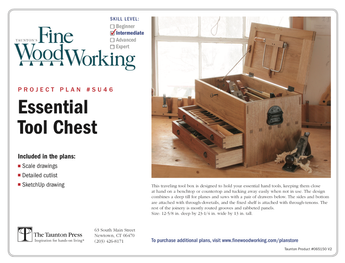
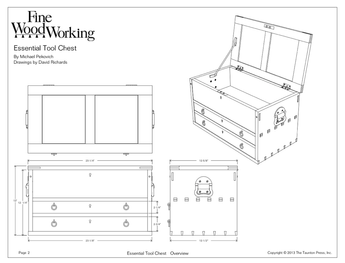
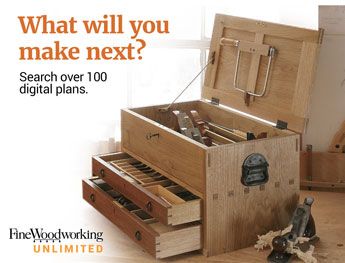
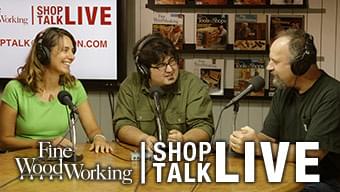
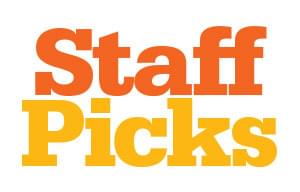
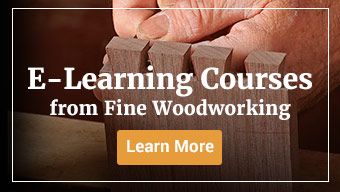







Replies
Jake,
Go for O-1. A-2 is a coarse grained steel that really requires a staged and atmosphere controlled furnace to properly heat treat. Coarse grain isn't a help for attaining and keeping a keen edge, especially on a relatively hard and brittle steel.
W-1 would be best but the last real commercial source for W-1 recently quit producing tool steel in favor of exotic metal for missile defense. (I wonder if their huge political donations in the last national elections had anything to do with that.)
I suggest you skip cap irons all together. For the user, they create more problems than they solve. For the plane maker they offer an excuse for low tolerance work.
Jake,
Most of the woodworking tool suppliers, Garrett Wade, WoodCraft, Lee Valley, Grizzly, Rockler sell this stuff. For a very resonable price, you get the plane iron and the cap iron wrapped in a very attractive package that also works admirably as the body of the plane!
Sorry!
But seriously, it is hard to buy such materials in small quantity at a reasonable price. Unless you have the facilities to cut the material down from larger stock, you pay for both the stock and the cutting, sometimes more than a finished plane iron from a maker of these things who buys supplies in quantity.
All of the above sell plane irons. You can make the cap iron from soft steel. In the wooden plane, the plane iron is the only metal part.
Rich
I use A-2 for the scraper chisels on my lathe, but only in 1/2" widths, or less. I get an acceptable temper using my acetelene (sp) torch. If they get soft during use, I just reheat. For anything wider, you need an electric furnace. I would recommend that you buy Hock blades. I did make some 1" plane blades using A-2 that turned out ok.
Making mediocre wooden planes is fun. Making a real good one is not easy! Take a look at Knight-Tools up in Portland. U can find him using a web search. Also try St. James Bay Tool Co in AZ.
http://www.knight-toolworks.com/
http://www.stjamesbaytoolco.com/
PlaneWood by Mike_in_Katy
PlaneWood
Hi Jake,
Agree with the previous comments. From the wording in Larry's response, I'd guess that he's in the trade also.
Basically, any steel, hardened properly, will make a satisfactory blade, but there is satisfactory and above-satisfactory. As with anything, you get what you pay for. Ideally, you are looking for a hard (resists damage) and tough (ability to bend without breaking) steel when heat-treated.
To explain the terminology behind tool steel and to give you some pointers should you decide to make your own blade, I'll summarise off the top of my head the differences in the tool steel grades. I have a Mat'ls Eng background, but heat treatment theory was 15 yrs ago, so some of the detail is a little sketchy.
Apologies if I've pitched this a little low, but I do not know your background in heat treating & equipment you have.
The ability of a steel to be hardened becomes easier (generally) as the alloy content (eg: % carbon, chromium, tungsten (wolfram), vanadium, etc) increases.
As it becomes easier to harden the steel, the severity of the quench required from the furnace to produce the harder structure becomes less severe.
In order of quench severity from fastest to slowest, the common quenching media are brine (water + 3% salt), water, oil, air. (would not recommend doing an oil quench at home - lots of acrid smoke, soot and possible flames).
The W-.. tool steels need a water quench to make the harder steel, an oil quench is too slow to do the job properly.
The O-.. series steels will quench in either oil or water
The A-.. series steels will quench in air, oil or water. Air is sufficient to do the job properly, with less distortion than that of a water quench.
Steel needs to be at a uniform temperature when it is taken from the 'soak' (primary heat treatment where the steel is glowing red/orange) and quenched.
Immediately from the quench, the steel is very hard, but too brittle to be used - snaps easily (= chips in the plane blade). The steel needs to be tempered at approx 300-500F (depends on the grade of steel) for a set amount of time to take the brittleness out but without losing too much of the hardness.
Back to plane blades, A-2 is the current trend/fad and gives great results (& costs a fortune), but plane blades 150 years ago were made well without the benefit of the modern alloying technology and heat treatment, out of very basic water-hardening steel.
Since you're not (I assume, my apologies if I'm wrong) equipped with professional heat treating gear, I would pick a middle of the road grade, such as O-2 (or O-1 as per Larry's recommendation) to give you enough latitude for incorrect temperatures and still give a good result. As well, the highly alloyed grades such as A-2 (where there are more alloying elements than iron in the steel) need controlled atmospheres to avoid the oxygen in the air burning out the alloying elements.
Your supplier should be able to tell you what heat cycle is necessary to produce a satisfactory edge for the steel you buy. If not, find a supplier who can support the product they sell. I can buy O-2 in 350 x 50 x 6mm ground square locally for the equivalent of USD 12 per length, supplier is Sandvik.
As you're aware, do all your shaping of the blade prior to quenching and expect some random distortion in the blade after it's quenched that will need to be ground/lapped off.
I use wooden planes with and without cap irons. Some metal planes also do not use cap irons, eg: the Lee-Nielsen copy of the Stanley 62. Blades without cap irons are approx 1/4" thick.
Here is another company that make wooden planes without cap irons - HNT Gordon - http://www.hotkey.net.au/~hntgordon/
Sorry for any gramatical errors, spelling errors and point form. I have my 6 month old sitting on my lap - needs to be held constantly today.
Anyway, good luck with the plane. Post some pictures when its done and let us know how it went.
Eddie
Edited 8/3/2002 3:42:59 AM ET by eddie
Edited 8/3/2002 3:51:31 AM ET by eddie
Edited 8/3/2002 6:53:43 AM ET by eddie
Eddie,
The last time I heat treated anything was when I made a screwdriver in metal shop (a looooong time ago) but now I find myself needing to do so once more.
I have the Lie-Nielsen beading tool. They supply blank blade stock so you can make your own blades. The stock comes unhardened--so you can work it with files and a hacksaw--and that's fine for one time use. But I've made a few blades that I want to keep around and use many more times than once.
The tool came with instructions on how to harden the blank blades. They advise using a propane torch to heat them to a bright red/orange heat (until they lose their magnetic properties) and an oil quench. But they say it is unnecessary to anneal them. Can that possibly be right?
Second question: I've heard of annealing steel in the kitchen oven or a toaster oven--equipment that I have. I can't remember if anyone said whether or not to quench the steel after heating it to the purple/straw stage. Is quenching necessary?
(Before you suggest it, they are too small and too few to pay anyone to do it for me. LN will do it for something like five dollars each; but that seems like too much if I can do it myself.)
BTW and OT: I find myself becoming less and less enamored of A2 steel. The two A2 irons I have don't seem to me (completely subjectively) to be enough better than the other (O1? O2?) steel to be worth the trouble--and trouble they are. I spent the better part of an afternoon just flattening the back of an A2 iron; and putting an edge on them takes correspondingly longer as well. I'm not convinced that they take as fine an edge, or that the edge lasts longer than my other irons. I guess I'm still waiting to be convinced. (I haven't tried one of the cryogenicaly (sp?)treated irons yet.)
Alan
Hi Alan,
There are a few grades that don't need annealing, but it may help. Perhaps the as-quenched hardness of the LN pieces is approx 60HRC, and, if tempered, it goes back to 57-58HRC, so annealing will produce a blade that dulls quickly.
Carbon steel can be tempered in an oven as they have low tempering temperatures - the FW 'tools & shops' issue had details.
Cheers,
Eddie
A-2 steel is an excellent material (above comments aside). I have them in all my bench planes including the ones I made myself, and it easily takes and holds a very fine edge that is far superior to the oil hardened after market blades I tried before. If you look at supplier’s catalogs, you will see that it is noted for its high wear resistance, and fine grain structure and also it’s dimensional stability (stability is hardly a selling point for a plane blade). I work part time in a machine shop, and A-2 and D-2 are the steels of choice for demanding applications that will not be subject to high heat, D-2 is far more expensive and not as easy to find in flat ground stock. A-2 is easy to find in precision ground flat stock at nearly any well-stocked industrial supplier, and I did not find the price overly high, it worked out to something like $9.00 per blade, for the dozen I made, including heat-treating. You should be able to get 18" lengths at a good price, which will make 3 blades. I wouldn’t heat treat it (or any steel) myself. In my area heat-treating companies will do small jobs for a flat fee of $20.00. Several years ago, I had blades made for all my planes plus a few extras, and I still did not have to pay over the minimum fee (they charge by the pound). Now that A-2 blades are commonly available it is not worth the trouble to make them yourself, unless you want a thicker than normal blade. I believe that there is enough material in an after market blade to allow for grinding for use in a panel raising plane. I have some blades that have been cryogenically treated, but I can’t see any difference in them and those that haven’t. When I made my own planes, I just used standard cap irons, but a panel raising plane does present a problem that I don’t know the answer to.
Hi Rob,
Thanks for info in your post. Custom heat treatment is an idea worth considering Jake.
Attached photos of panel raiser - cap iron details. A picture tells a thousand words.
Cheers,
Eddie
Thanks for all the info Gents.
hi jake, i found the ideal plane iron while rummaging in an old mill slated for demolition, its the side joiner blade from a 1930s s4s machine. its dimensions are 2 1/2" w x5"l x3/8 thick. i made a smoothing plane to go around it and its really something. anytime i need to plane really tearout prone wood, its what i reach for. the iron is so thick that it cant flex and chatter and is laminated with approx. 2" of very hard steel at the cutting edge. the makers name is simonds and i cant recomend it highly enough. they also make a skewed cutter which would be a jewel for raising panels. with a good tight throat and the iron mounted bevel up, i dont think you need a cap iron(chipbreaker,whatever) good luck. jc
Jake -
I get my A-2 from http://www.onlinemetals.com/.
I've had pretty good luck with it. I made a bunch of palm planes using 1" wide x 1/16" thick blades. I quenched those in half paint thinner and half motor oil (outside). Those turned out to be VERY durable. Much harder than Stanley plane blades, but not so brittle that they nick easily.
I air cooled some to use as chisels and they came out very hard, but brittle. The chisels are pretty prone to getting nicks.
PlaneWood by Mike_in_Katy
PlaneWood
Hi Mike,
Could you elaborate on your heat treating technique for A2? I have made a bunch of tools from good old O1 (marking knife, chisels, bowl scrapers for turning), but never attempted A2 because of the complicated technique and equipment needed for A2. Sounds like you have an unorthodox way that works. What color did you heat to? Did you temper after quenching in thinner/oil? Also, what is a palm plane?
Rick
Trees -
my first attempt at A-2 was to heat it to a medium orange in color, hold it there for maybe 30 seconds, then drop the pieces in a quinch liquid made of half paint thinner and half motor oil. Those were 1" wide plane blades and they turned out hard and tough. Did not temper afterwards. I made a bunch of lathe chisels (scrapers) by just air cooling. I use my cutting torch as the heat source. I have noticed that A-2 seems to require uniform heat, so anything over about 1" probably should be heated in an kiln.
I made some narrow chisels too, but they turned out a little to brittle.
Palm plane? A plane that fits in my palm! Were about 4" long, 1" wide and 1/2" tall. I set the blade angle at 35 degrees for smooth cutting in soft woods. I gave about a dozen away as Xmas presents.
PlaneWood by Mike_in_KatyPlaneWood
This forum post is now archived. Commenting has been disabled